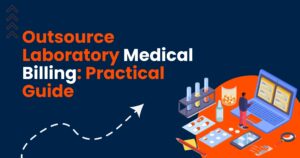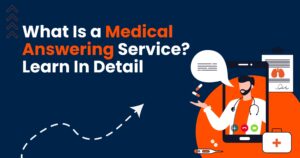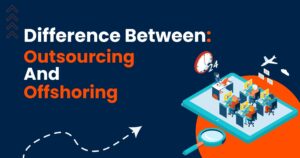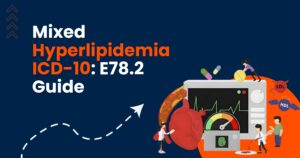Organizations are expected to deal with extensive data throughout everyday operations where locating information and ensuring sensitive data is a critical challenge. The cornerstone of maintaining supremacy and security over this information is effective data classification. It enables organizations to proficiently manage, protect and handle confidential data by delegating different classification levels. In doing so, organizations can shift the goal post from heavy resource capitalization to applying customized security controls to each data category’s needs. If you want to decipher the details of data classification, let this insightful article help you scratch below the surface.
How Does the Data Classification Process Operate?
Data classification is more prevalent in the healthcare industry, where it proves effective in identifying and protecting sensitive information. This includes protected health information, financial data, and personally identifiable information. The process of protecting patient data or information related to any industry and complying with GDPR (General Data Protection Regulation), HIPAA, or CCPA heavily relies on seamless data classification.
The process begins with structuring a classification scheme. It outlines the categories and complete criteria for each data type. Some salient points of the process are highlighted below.
- Internal use data, public, restricted and confidential are the common classification levels.
- Organizations define their data assets as both structured and unstructured coupled with classification levels for each asset.
- Automated classification tools facilitate the classification process with the help of advanced algorithms to inspect and evaluate data.
- The process requires matching it to the determined categories based on content, metadata, or other key attributes.
- Manual classification involves human intervention when manual expertise is required to evaluate data security level.
- The entities of HIPAA compliance allow standardized integration of data classification into the security practices.
- Once data is classified, organizations can utilize the information as a resource by implementing relevant security policies for each level.
- The security measures may include remote patient monitoring systems, encryption for vulnerable data, role-based access controls and data retention policies catering to each category’s needs.
- This integration helps to optimize resource deployment, prioritize protection and make informed decisions about data handling.
- All in all, a cloud-based EHR solution ensures a proactive and targeted approach to reduce potential risks and fortify security posture.
Why is Data Classification Important?
Data classification is the new priority of data handling experts to maintain the data ecosystem in healthcare and other industries. Understanding the importance of timely and appropriate data classification is pivotal to safeguarding susceptible information and reducing risks. Let’s scroll down to explore the principal reasons for choosing this strategy.
- Organizations can easily spot the vulnerable assets within the data ecosystem by proper classification.
- This information available in classified form helps in the allocation of appropriate measures such as monitoring, data encryption and high-risk data categories.
- Data classification allows organizations to comply with security protocols in the most effective way for the safety of vulnerable information.
- Organizations can easily align their security efforts to industry-specific protocols and legal demands.
Overview of PCI and PII
Organizations experience various tiers of Payment Card Industry (PCI) Standards. These protocols help to safeguard cardholder data during financial transactions. PCI proposes fundamental guidelines for businesses handling, storing or processing payment card information. Regulatory compliance is non-negotiable for all the involved entities including merchants, service providers, and financial bodies. The barrage of security measures is sufficient to encrypt networks, fortify access controls and conduct regular vulnerability assessments.
Whereas, PII belongs to personally identifiable data. When it comes to sensitive healthcare information, the prime concern is the protection of data that identifies the person. This term encompasses a variety of information as mentioned in the form of a list.
- Phone details
- Social Security Numbers (SSN)
- Biometric data
- Address information
- Email details
- Monetary account details
PII holds special significance for individuals and organizations due to its susceptibility to identity fraud, theft, or other malicious activities. Data integrity is crucial for regulatory compliance, privacy and integrity. The term protected health information covers almost similar scope including sensitive data related to a person’s health. This information includes medical records, diagnostic results, medical prescriptions, and health based insurance details.
Data Classification | Know the Types
It is important to understand three logical types of data classification with unique pros and cons. These data classification solutions may focus on multiple approaches. The choice of approach primarily depends upon factors such as the organization size, users’ training level or the proportion of sensitive data.
User-based Classification
Users bear this burden in the form of bulk files and categorize them. This method can significantly knock down false positives. It relies on trained human resources and time to classify a vast trove of data. This approach is best for leaner organizations or smaller datasets.
Content-based Classification
This practice focuses on file examination and search for vulnerable assets inside them. Take it as a secure type for the unshareable information with the public. It helps in hiding sensitive information in innocuous file types. Remember, it comes with the risk of germinating false positives that significantly waste employee time.
Context-based Classification
Instead of checking file contents directly, this approach focuses on metadata associated with files to identify the sensitivity of data available inside. This may also include information about the location of file storage and which application the particular file is built for. Organizations having a certain degree of control over vulnerable data and trained staff prefer to choose this type of classification.
GDPR and Data Classification
The European Union adopted a new regulation in 2016 that is General Data Protection Regulation (GDPR). Pertaining to its protocols, data classification has become more crucial than ever. These regulations help organizations to identify sensitive data with proactive integration with effective security measures.
Adding more to it, GDPR provides extensive security for certain categories of vulnerable data. It prohibits data processing related to philosophical, racial or ethnic origin, and theological beliefs. Data classification on all these lines can significantly mitigate the risk of data compliance.
Steps for Effective Healthcare Data Classification
The average loss of data exploitation across industries was $4.45 million, yet the healthcare data leakage proved one of the highest among all trades at $10.93 million in 2023. Data classification is more than chasing security and smooth accessibility. The purpose behind this development is to allow modern organizations, especially healthcare, to make sense of storing vast amounts of data and processing it at any given moment. Some of the worth-sharing steps of data classification in the medicare sector are mentioned here.
Know the Current Step
The kickstart point is to realize the location of current data and all the protocols that pertain to your healthcare facility. It is perhaps the perfect beginning point for effective results. It involves all the details of the type of health data you must have before you can accurately classify it.
Data Classification Strong Policy
Without creating a strong policy for healthcare data classification, staying compliant with the regulations is nearly impossible. Building a particular policy should be the top priority of an organization.
Prioritize and Organize Information
After building a proper policy and having correct knowledge about your current healthcare data, it’s the right time to properly classify it. Decide to tag your data based on its susceptibility and privacy.
Data Classification Successful Practices
Despite facing various challenges in value-based healthcare, getting the most out of data classification is the priority action in several areas. Some of the tipping practices are ready to ameliorate the operational efficiency of your organization.
- Identify where your vulnerable data resides, including physical hard drives and cloud-based repositories. Secure them with encryption.
- Empower and train healthcare employees to work at the forefront in tagging and placing medical or other industrial data in the most relevant category. The purpose of rigorous training is to ensure that manual error doesn’t compromise your immense efforts.
- Put your efforts into creating a scheme that is helpful to arrange data into different categories for better patient engagement strategies. Don’t let the process be overly dragged and use fewer categories for effective classification activities.
- Understanding data security and privacy regulations is paramount for streamlined operations. It also provides impunity from penalties for noncompliance.
- Choose the data classification solution that best suits your medical organization. A fully secured data related platform ensures smooth information discovery, classification and data prioritization instead of patching together multifaceted solutions from a wide range of vendors.
In a profusely data-driven world, the ability to classify and manage information is more or less an amalgamation of art and science. By understanding the significance of data classification and implementing robust classification strategies, businesses can easily protect their valuable resources and make more informed decisions. Data classification not only ensures data security but also serves as a cornerstone in achieving an organization’s goals. Proper data classification is a way to avoid the headaches — and resources — down the road.





